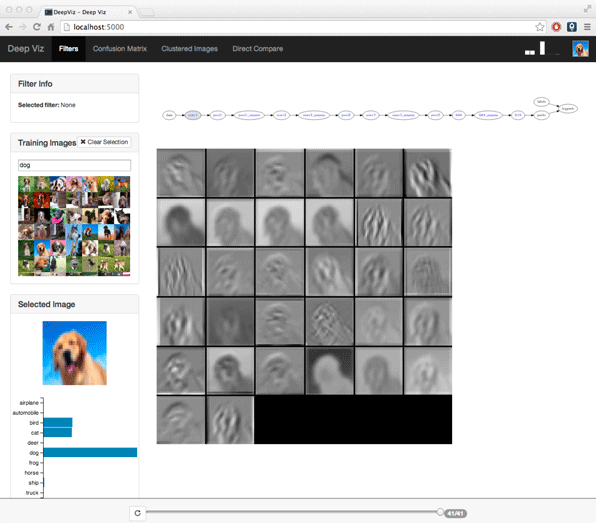DeepViz is an interactive tool for visualizing deep convolutional neural networks that perform image classification.
DeepViz's Python library dependencies are listed in ./webui/requirements.txt; you can install them using pip by running pip install -r requirements.txt. Some of these libraries depend on scipy and numpy, which can take a while to build from their sources. If you want to quickly get up and running on a machine that doesn't have these dependencies installed, it might be easiest to install a Python distribution like Anaconda that includes these libraries, then install the rest of the libraries using pip install -r requirements.txt.
DeepViz requires several input datasets: the image corpus used to train the model, a series of checkpoints of the model during its training, and a set of precomputed statistics about the model's predictions. To get started quickly, you can use these precomputed datasets:
To start the web UI, run
./webui/runserver.py --model MODEL --cifar CIFAR --model-stats MODEL_STATS
where MODEL is the path to a path to a directory of snapshots of models trained by cuda-convnet, CIFAR is a path to a copy of the CIFAR-10 image corpus, and MODEL_STATS is a database of statistics computed offline on the trained models (see section below).
If everything worked correctly, you should be able to browse to http://localhost:5000 to view the UI.
The model statistics database contains pre-computed statistics about the model's predictions at each checkpoint. These databases can be generated from a trained model using the build_model_stats_db script:
./webui/deepviz_webui/build_model_stats_db.py --model MODEL --cifar CIFAR --num-classes 10 --output-dir MODEL_STATS
